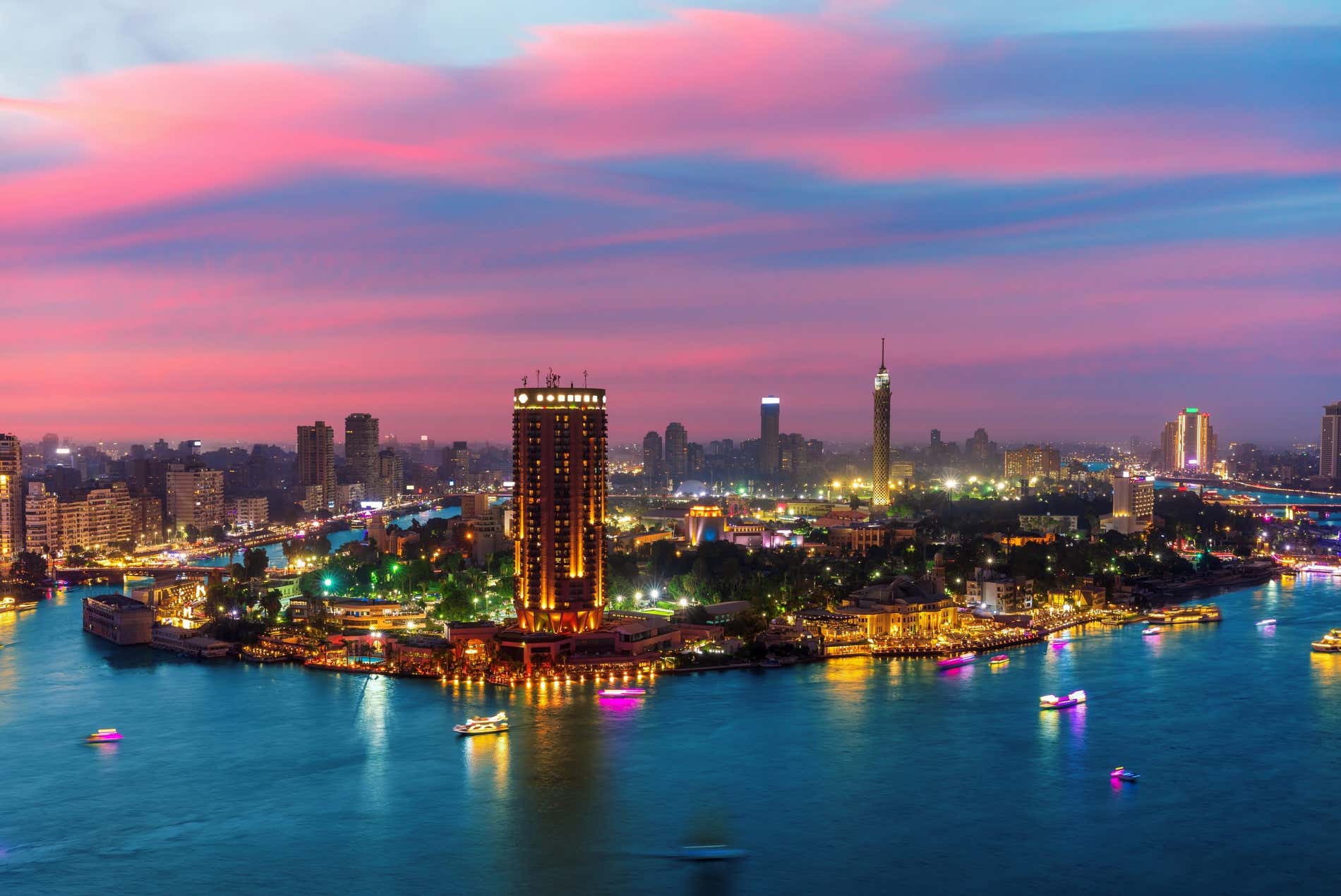3 Days in Kyoto: Itinerary for Japan’s Most Traditional City
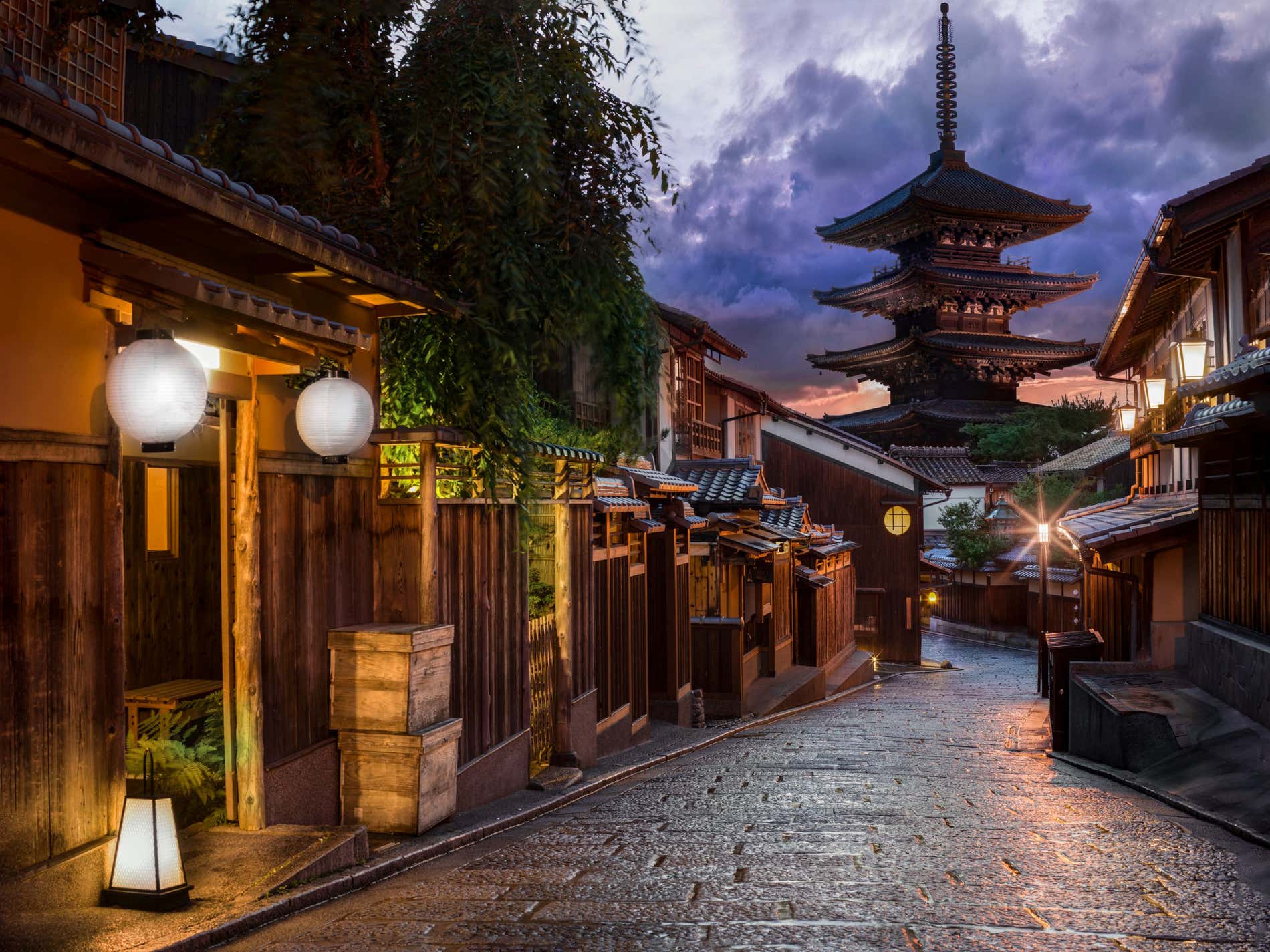
Kyoto is a quintessential Japanese destination, and a must-visit when journeying in the ‘Land of the Rising Sun’. It has a unique blend of modern cityscapes and cultural heritage and is home to some of the country’s most beloved temples. Spending 3 days in Kyoto is enough to do the city justice, leaving you with enough time to see its main attractions and to take in the city’s unique atmosphere. At Civitatis, we’ve crafted a comprehensive 3-day itinerary, to take the pressure off of your planning and to ensure you enjoy the best of what Kyoto has to offer!
Day 1
On our first day in Kyoto, we’re going to hit up three of the city’s most famous spots, Fushimi Inari, Kiyomizu-dera, and Gion, Kyoto’s entertainment district.
Fushimi Inari
Begin your first day with an early visit to Fushimi Inari Taisha, world-famous for its thousands of torii gates, which lead you up a winding path in the wooded forest of Mount Inari. It’s super easy to get here from Kyoto Station. The nearest station to Fushimi Inari is JR Inari Station—the journey takes around 5 minutes and is covered by the JR Pass if you have one.
Take your time walking through the trails that wind up Mount Inari, which provide stunning views and lots of photo opportunities. On the trails, along with more torii gates than you’ve seen in your life, you’ll encounter various small shrines and fox statues, known as kitsune—foxes are considered the messengers of Inari, the Shinto god of rice and prosperity. The entire trail takes about 2-3 hours to complete, but you can turn back at any point along the way.
There are lots of ways of experiencing Fushimi Inari, but our favorite way is along this Fushimi Inari Hidden Hiking Tour. On this tour, you’ll get a view of Fushimi Inari that most tourists don’t, and with nearly no crowds!
Pro tip: For the best experience, arrive early. If you’re there between 7 and 8 AM, you should beat the crowds and the heat, especially during the summer months. Also, be sure to bring comfortable walking shoes and a bottle of water.
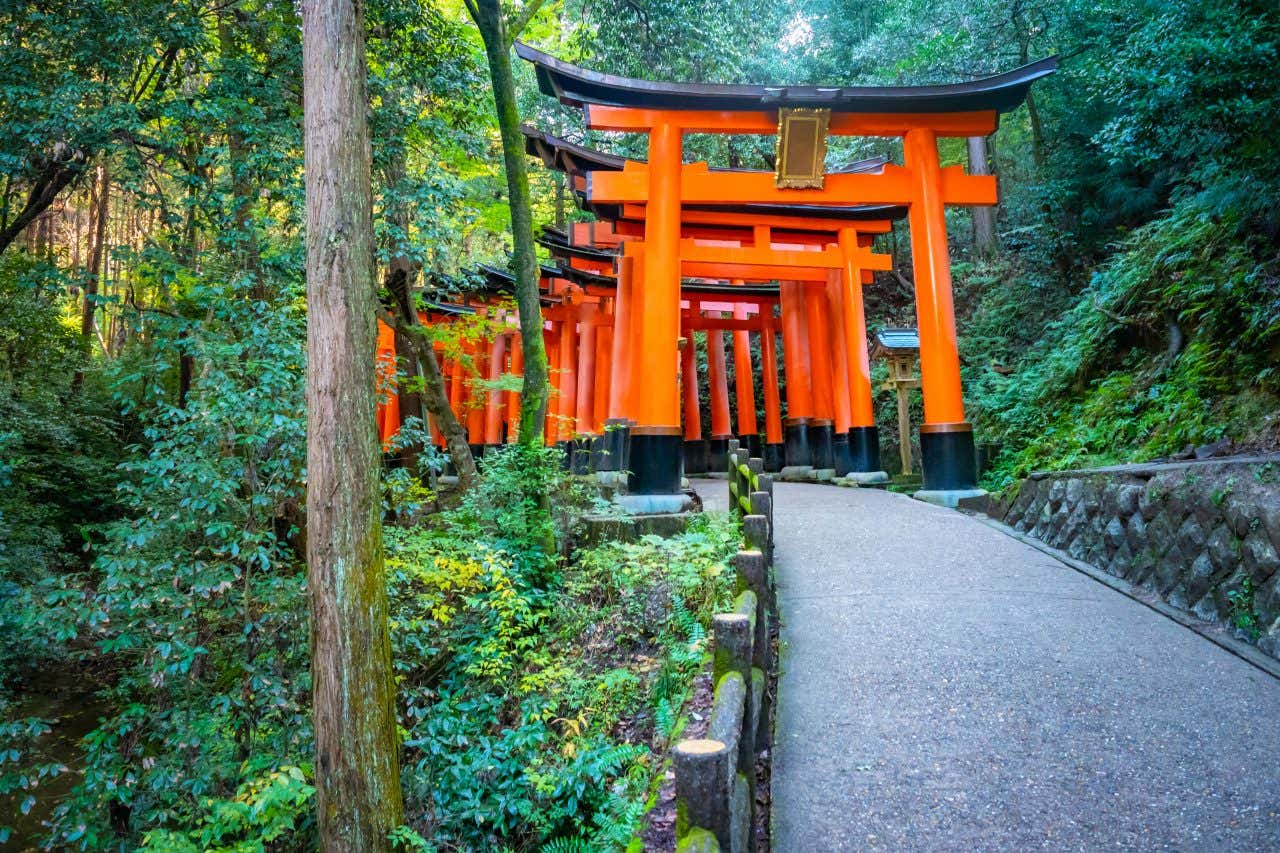
Kiyomizu-dera & Higashiyama District
After lunch, Continue your exploration of Kyoto in the Higashiyama District, an area which stretches along the lower slopes of Kyoto’s eastern mountains, best known for its preserved historic districts, which feature charming narrow streets, lined with traditional wooden buildings.
The main attraction in this area however is the stunning Kiyomuzu-dera temple, a UNESCO World Heritage Site. The temple, whose name literally translates to ‘Pure Water Temple’, was founded in 780 AD on the site of the Otowa Waterfall. The temple is perhaps best known for its wooden stage, which juts out from the hillside, standing 43 feet (13 meters) off of the ground, and provides beautiful views of the cherry and maple trees below—making this an especially good place to visit in Autumn or during the cherry blossom season.
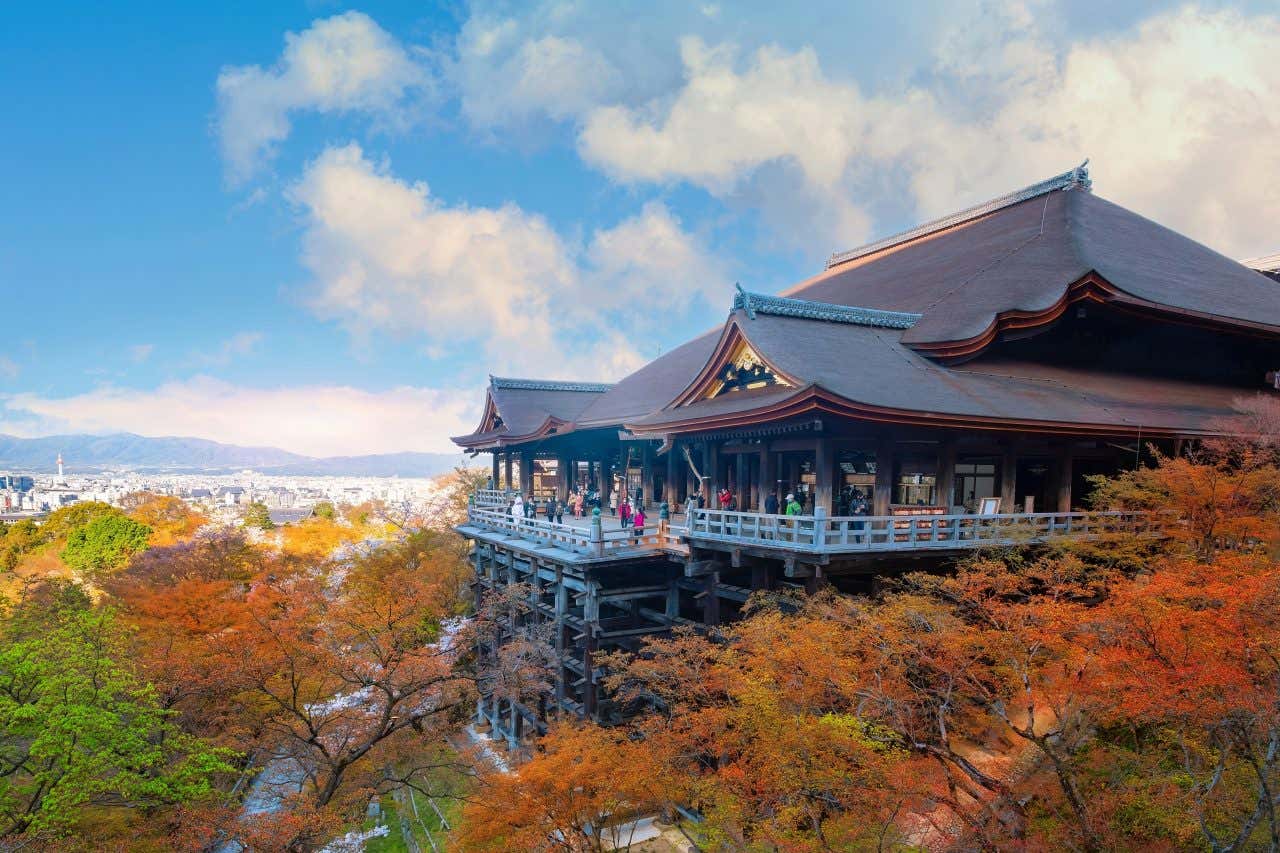
Once you’ve walked through the temple and its grounds, you’ll walk back down some of this district’s most iconic streets, Ninenzaka and Sannenzaka. These picturesque streets are lined with souvenir shops, tea houses, sweet shops, and eateries to choose from. After about 15 minutes of walking, you’ll arrive at Yasaka Shrine, which predates Kiyomuzu-dera, dating back to around 656 AD. This shrine is also known as the Gion Shrine, and is perhaps best known for hosting the Gion Matsuri summer festival in July, the most famous festival in the country. Behind this shrine, you’ll find Maruyama Park, gorgeous grounds, at their best during cherry blossom season, but incredible year-round.
If you have time, try to make a stop at Chion-in temple, which features one of the largest wooden gates in the country, measuring 79 feet (24 meters) tall and 164 feet (50 meters) wide. Approximately 70,000 tiles were used to cover its roof.
Gion, Kyoto’s Entertainment District
In the evening, make your way to Gion. This district is well-known for its Geisha who will often be seen walking around the area. Hanami-koji Street is lined with beautifully preserved wooden machiya houses that transport you back to Kyoto’s historic past. Explore the narrow alleys that lead to various shrines and traditional tea houses.
As the evening sets in, enjoy a quiet walk along Shirakawa Canal, which features soft lighting that highlights the traditional architecture. Conclude your day with a visit to Gion Corner, where you can witness a variety of Japanese performing arts, including tea ceremonies, ikebana (flower arranging), and traditional dance performances.
If you stick around until sundown, enjoy this Gion night tour, and gain a deeper insight into the area. Be sure to ask your guide for some restaurant recommendations for your dinner, as some of the finest eateries are in this area.
Please note: While exploring Gion, keep in mind that it’s considered disrespectful to take photos of geishas or maikos (apprentice geishas).
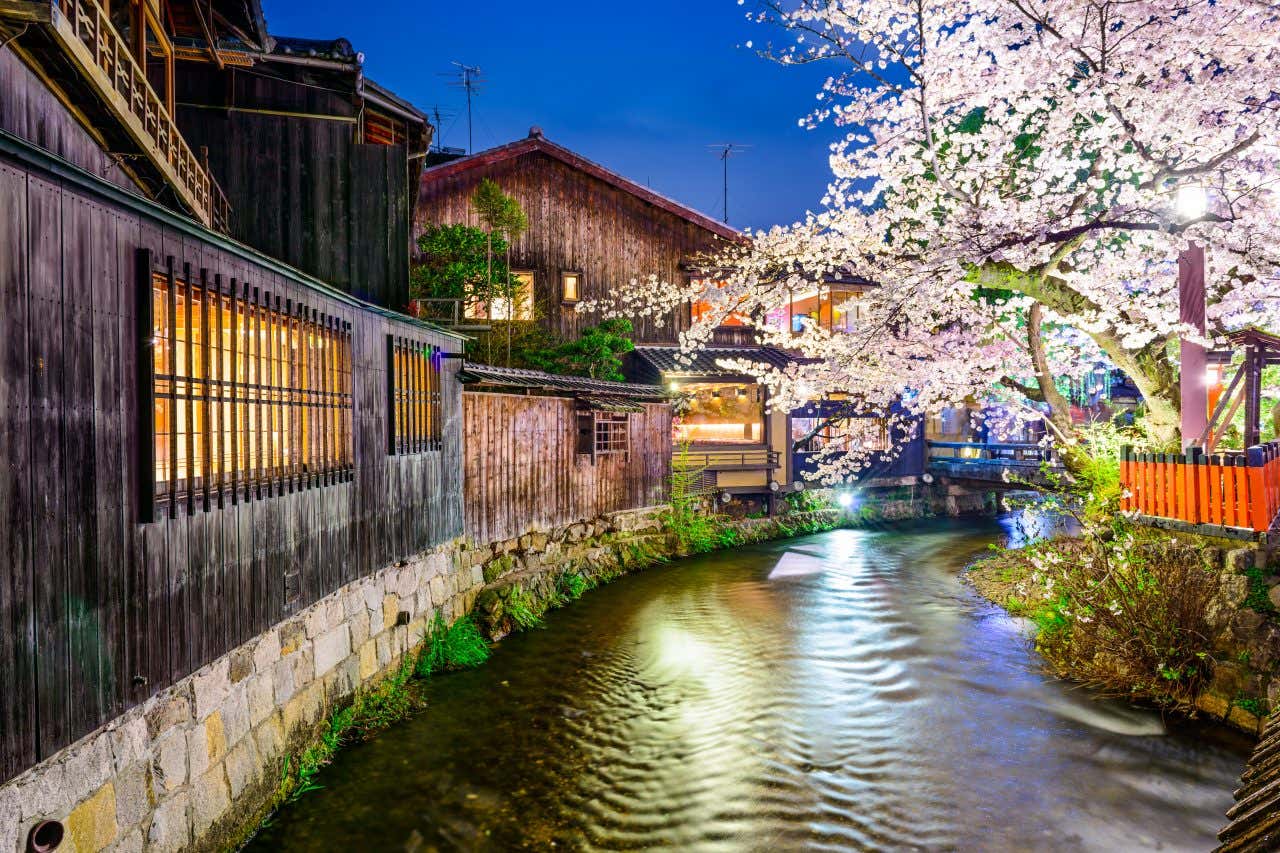
Day 2
Get your walking shoes on, today we’re exploring the city’s famous bamboo groves, enjoying a walking trail in the city and then we’re grabbing some food in the city’s most famous market.
Arashiyama Bamboo Grove and Togetsukyo Bridge
After a full first day in Kyoto, rise early once again and make your way to the district of Arashiyama on the west side of the city, most easily reached by train from central Kyoto. This area is one of the city’s most prominent for tourism, with plenty of temples and shrines to check out. Make your first stop of the day at Tenryu-ji Temple, a UNESCO World Heritage Site, with incredible landscaping, colorful trees, and a gorgeous zen garden. Make your way through the temple and its gardens and exit via the north gate, which will leave you right in the heart of Arashiyama’s Bamboo Grove.
Arashiyama Bamboo Grove is certainly one of the most photographed spots in Kyoto, although no photo can capture the other-worldly feel you experience when standing amidst the tall green trees. With Civitatis, you can enjoy a guided tour of Arashiyama & the Bamboo Grove, which includes a stop at the Tenryu-ji Temple, a traditional local lunch, and an expert guide who will be able to teach you more about the area.
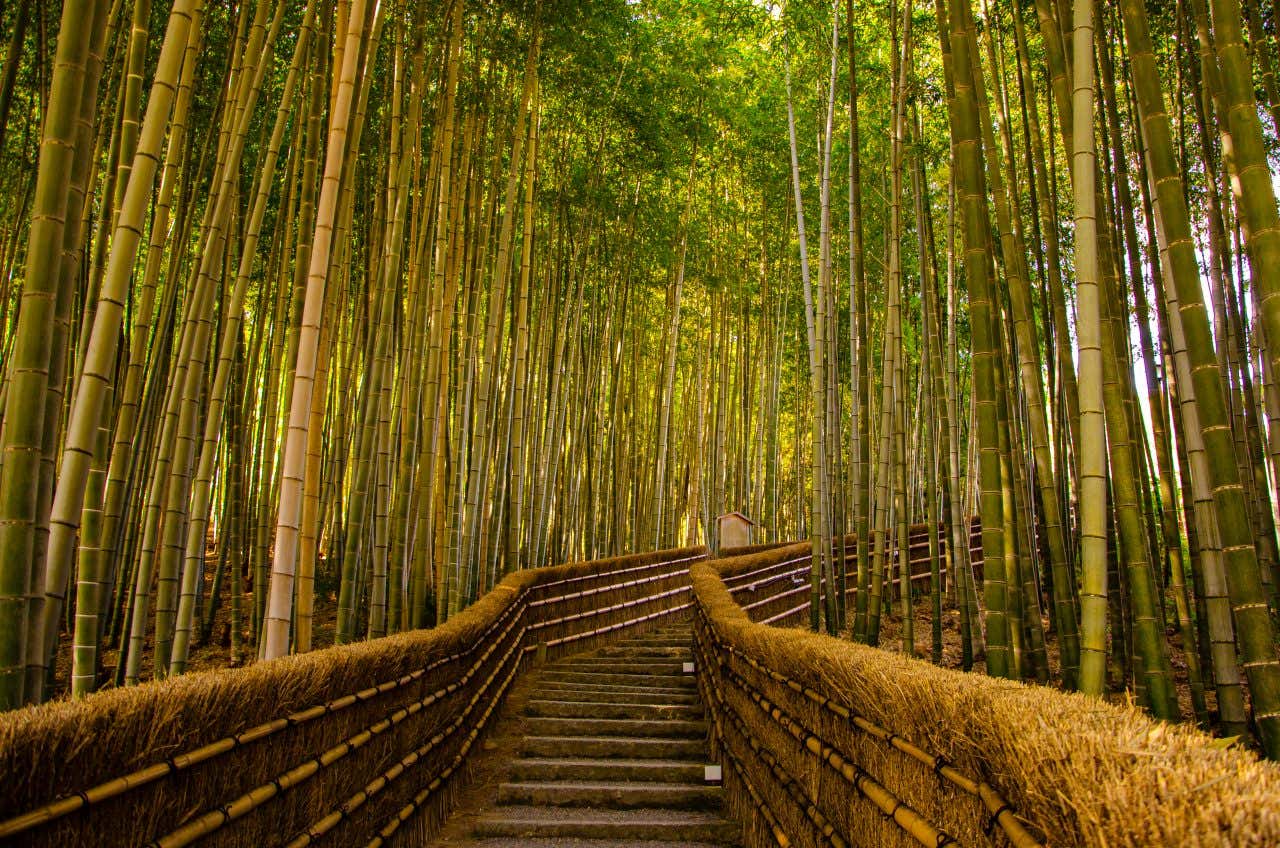
Just minutes away from the bamboo forest you’ll find the historic Togetsukyo Bridge, which spans the Katsura River and offers picturesque views of the surrounding mountains. For a unique adventure, climb up to the Iwatayama Monkey Park, home to over 100 Japanese macaques.
Philosopher’s Path and the Silver Pavillion
Once fed, make your way right across the city to the Philosopher’s Path, a tranquil pathway along a canal, lined with cherry blossom trees. Start the path at Ginkaku-ji, also known as the Silver Pavillion, a 15th-century temple also home to a beautiful moss garden and a sand garden.
After enjoying the grounds for a little while continue your journey along the Philosopher’s Path itself, which is just over a mile long (2 kilometers), and passes by brilliant restaurants, cafés, and shops, along with a number of small temples, notably Honen-in. The path concludes in the Nanzeji neighborhood, which is home to the Nanzenji Temple, another temple well worth checking out. A cool part of this temple is the brick aqueduct that passes right through the temple ground.
Pro tip: The city bus will take you from the Bamboo Grove to the Silver Pavillion in approximately 1 hour. To make life a bit easier for yourself, grab a taxi, which will only take around 25 minutes.

Nishiki Market
To refuel after a long day, make your way to Nishiki Market, often referred to as ‘Kyoto’s Kitchen.’ This narrow shopping street stretches over five blocks, offering endless amounts of local delicacies and specialties, from fresh seafood to Japanese sweets to high-quality knives and cookware. If you’re feeling adventurous, try tako-tamago, which consists of baby octopus stuffed with a quail egg. This dish is a specialty in food markets in Kyoto and Osaka, so try it for yourself!
Nishiki Market closes at 18:00, so at this point in the evening you might want to head back to your accommodation and rest, or maybe you’ll want to keep the night going! For more bars and restaurants, head to Pontocho Alley or back to the Gion District, which are around 5 and 10-minutes away, respectively.
You can also visit Nishiki Market as part of a guided tour with Civitatis.
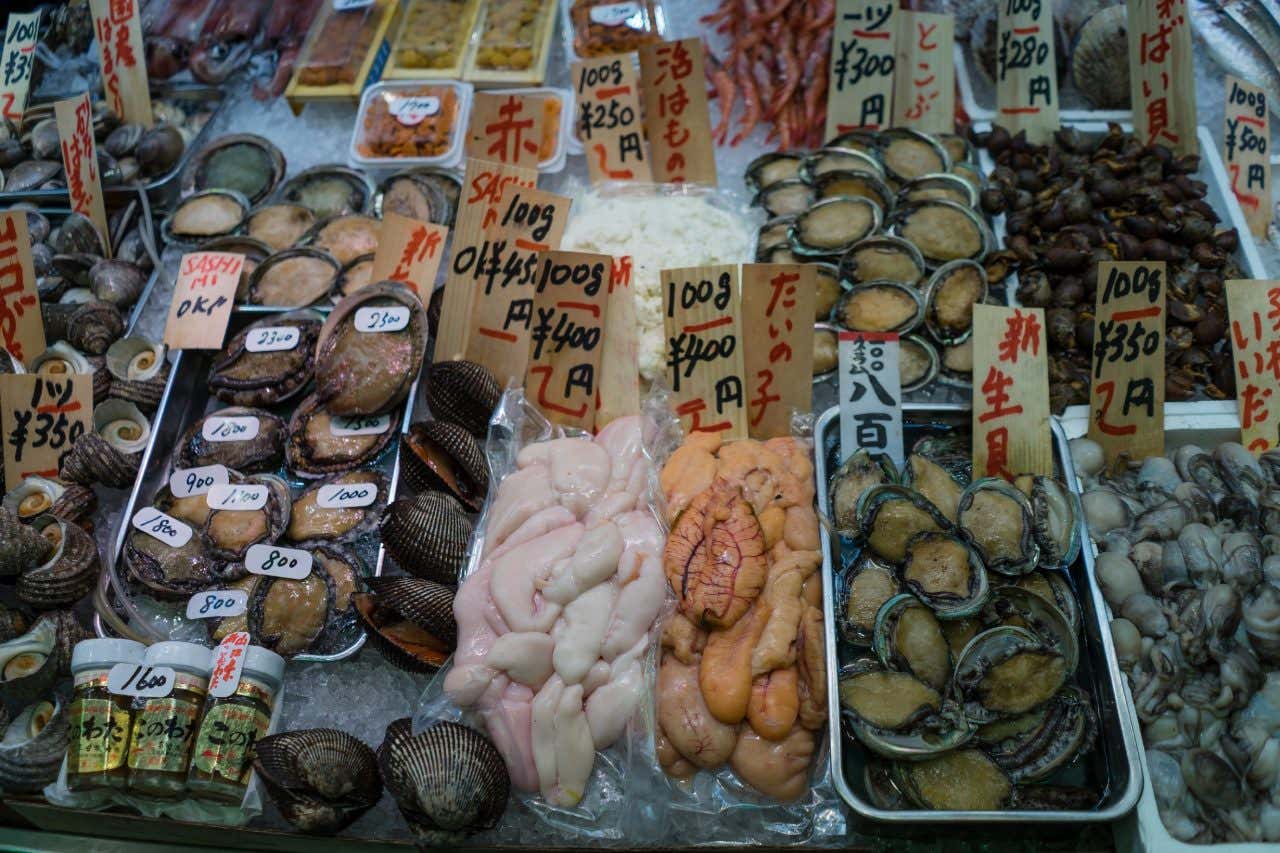
Day 3
Golden Pavillion (Kinkaku-ji)
On your third day in Kyoto, start the morning with an early arrival at Kinkaku-ji, the iconic Golden Pavilion. This Zen Buddhist temple is one of the most important in the country and best known for its distinctive gold leaf covering its upper decks. Originally built in the 14th century as a shogun’s retirement villa, the current structure was rebuilt in 1955 after being destroyed by fire. The temple’s golden exterior reflects beautifully in its surrounding mirror pond, creating one of the most picturesque and tranquil settings in Kyoto.
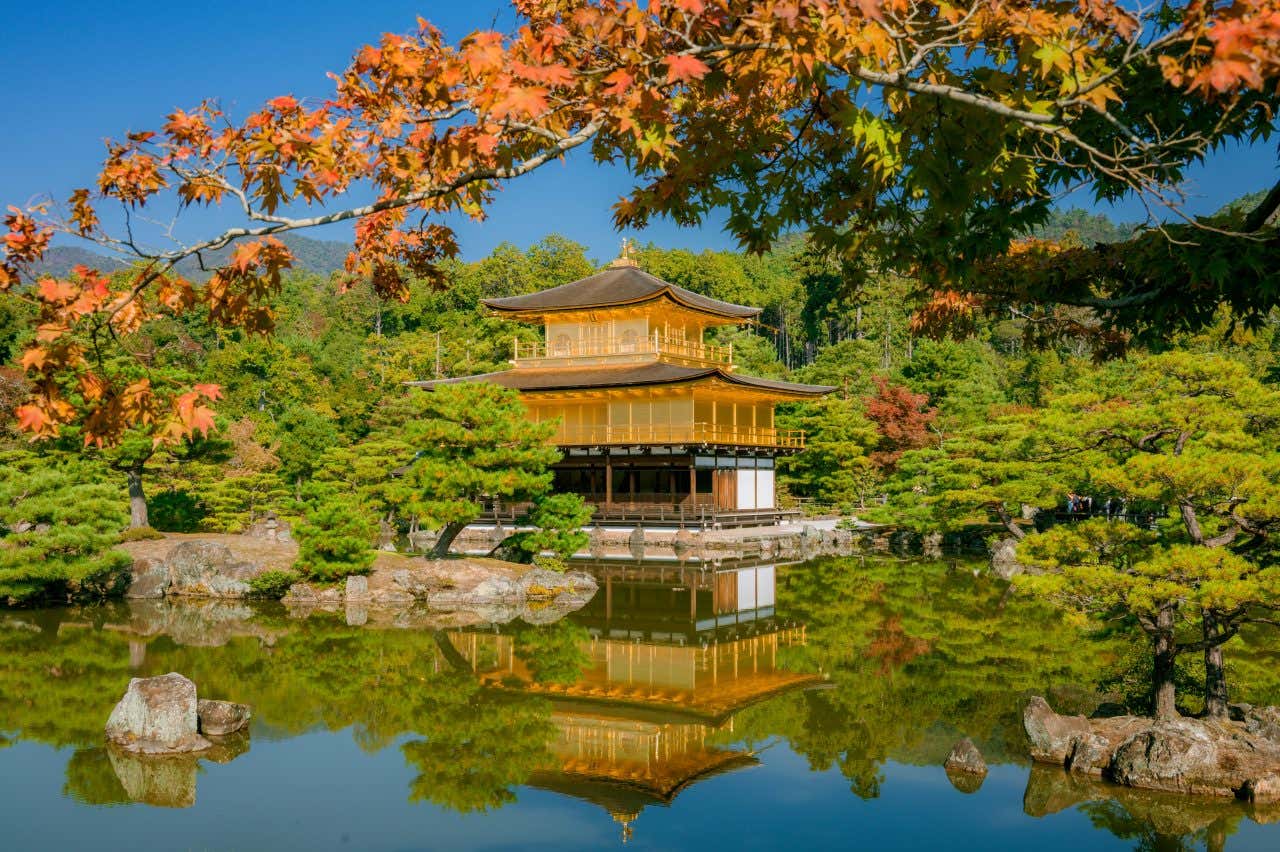
Imperial Palace and Nijo Castle
Continue your day with a guided tour of the Kyoto Imperial Palace and Nijo Castle. Walk through the expansive palace grounds and immerse yourself in the history of Japan’s former royal residence. At Nijo Castle, walk through its distinctive black and yellow gates, and explore the beautifully preserved Ninomaru Palace with ‘nightingale floors’ and lush gardens surrounding the castle.

Pontocho District
Finish your Kyoto adventure with dinner in the atmospheric Pontocho District. Choose from a variety of traditional kaiseki restaurants (elegant multi-course dining) or izakayas (casual pubs with small plates and drinks), while enjoying the view of the Kamo River. For an extra special experience, consider booking a Kyoto night walking tour with Civitatis, which provides insight into the city’s history and culture.
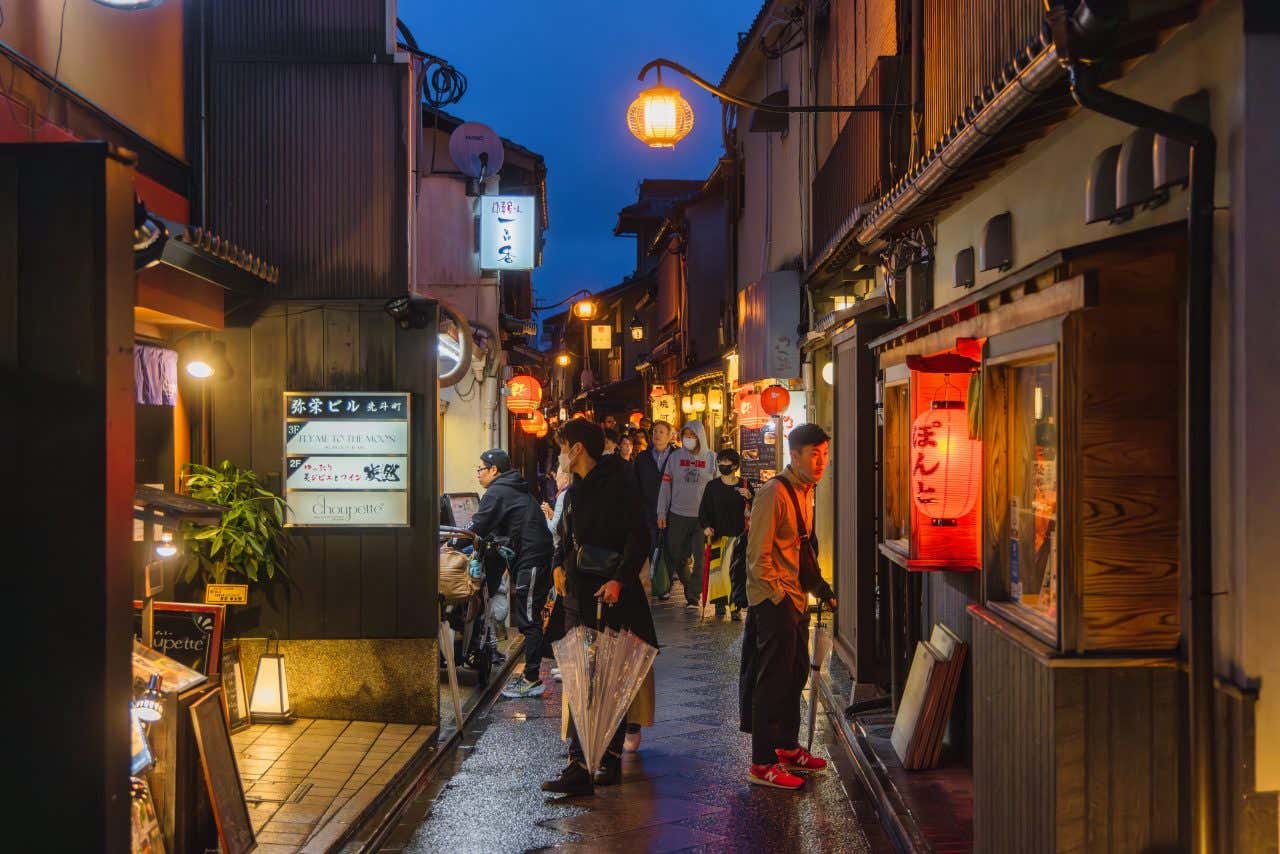
There you have it! That is our ideal way to spend 3 days in Kyoto. This is a truly magical city, and there’s plenty more to discover than we’ve outlined in this list. If you’re visiting for longer and are looking for more things to do, check out our other tours & experiences in Kyoto.
Most read of #Japan
The 8 Best Day Trips from Philadelphia
3 April 2025Top 10: What to Do in Barcelona + Travel Tips
28 March 2025NYC in 3 Days: The Perfect Speedy New York Itinerary
27 March 2025Top 10: What to Do in Cairo (+ Tour Packages)
21 March 2025





